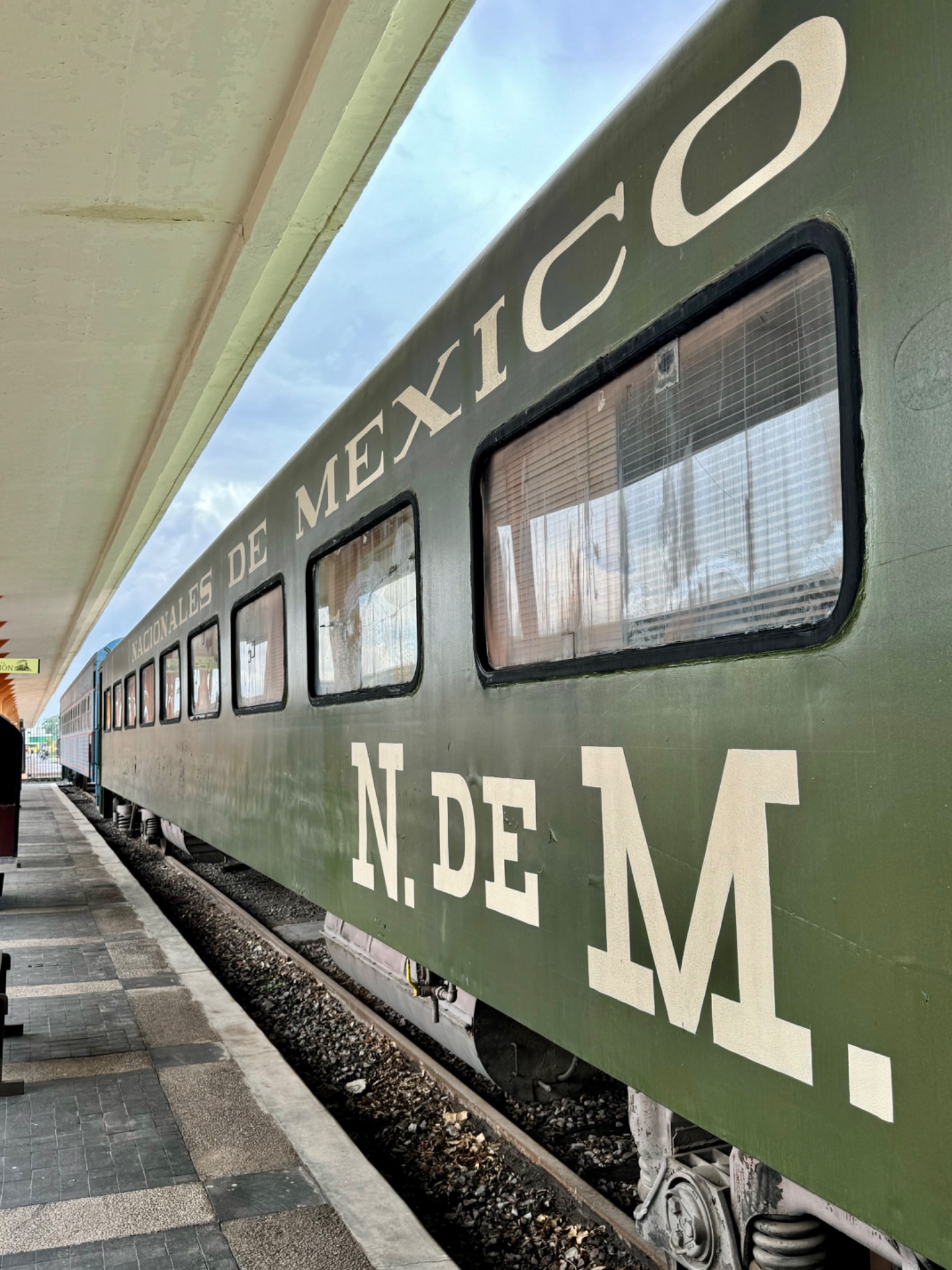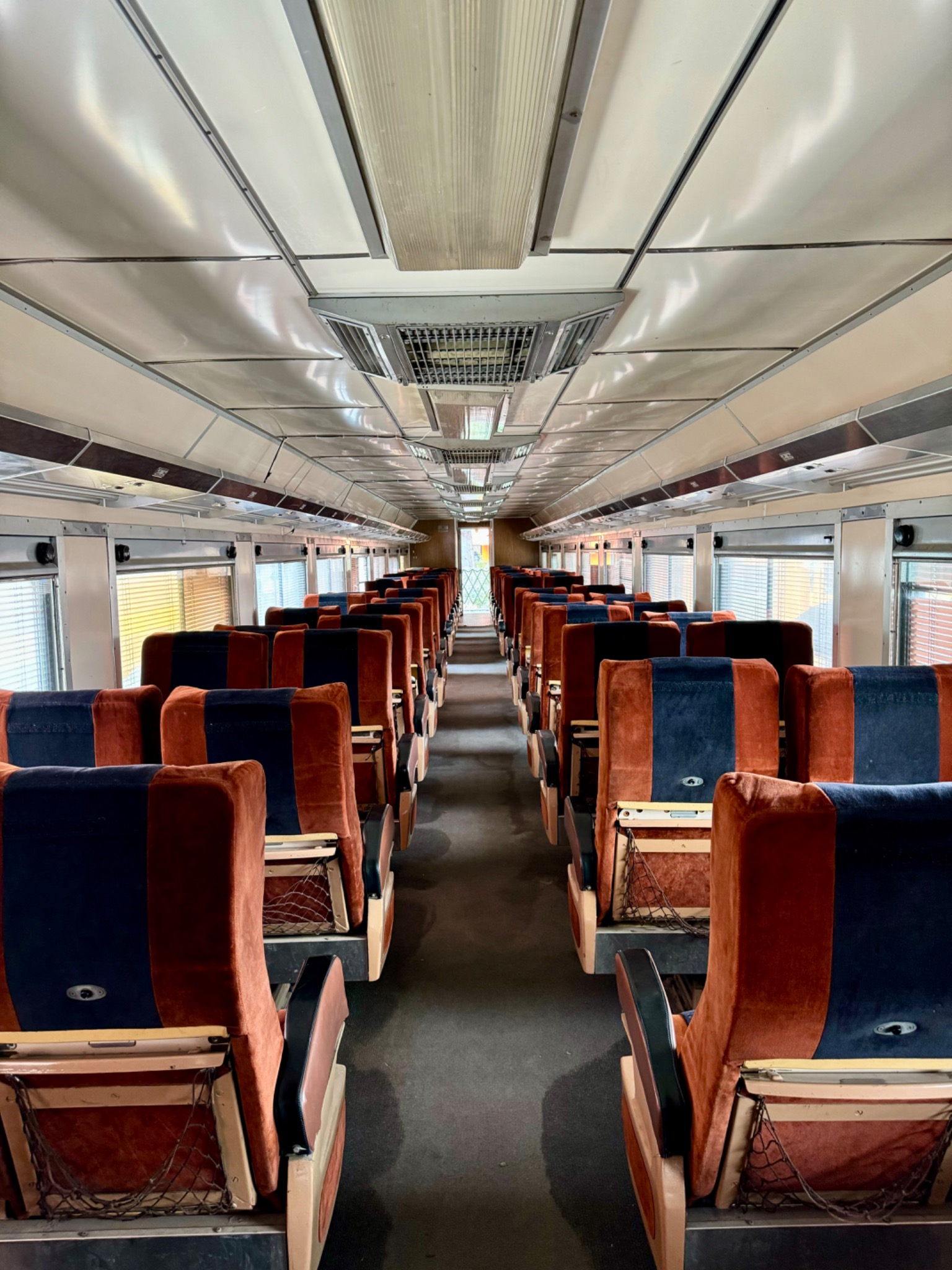
Cool Vintage Trains at Railway Museum in San Luis Potosí, Mexico
BY MARK CHESNUT
The Museo del Ferrocarril in San Luis Potosi, Mexico, is a beautiful former train station that has been converted into a fascinating (and well preserved) railway museum.
After serving as the city's train station from 1942 until 1994, this lovely, art-deco-inspired facility is now a railway museum with a variety of train memorabilia from the golden age of rail travel. And I was thrilled to see how they've maintained the beautiful architecture and murals.
My favorite part is that you can head out onto the platform and board several of the vintage trains, including multiple passenger cars and one car that has been converted for expositions. Inside the station, there are even more exhibitions, including model trains.
If you're looking for things to do in San Luis Potosí, this is a great option.

What Happened to Passenger Trains in Mexico?
Nearly all passenger train service ended in Mexico by the end of the 20th century. The railway museum provides a fascinating look back at a time when railways provided one of the most common ways to travel long distances (in fact, during my first visit to Mexico's interior back in 1991, I took an overnight train from Oaxaca to Mexico City, and it was a memorable trip). .
Passenger rail service in Mexico has a storied history dating back to the 19th century. The first railway line was inaugurated in 1873, connecting Mexico City with the Gulf of Mexico port of Veracruz.
This pivotal development marked the beginning of a significant era in Mexican long-distance transportation, promoting economic growth and facilitating the movement of people and goods across the country. The construction of the railway was heavily influenced by foreign investment and expertise, particularly from the United States and Britain. Over time, the network expanded to link other major cities and regions, playing a crucial role in Mexico’s industrialization.
The golden age of passenger rail in Mexico occurred in the early to mid-20th century, with an extensive network covering vast parts of the country. Iconic trains offered a comfortable and efficient alternative to road transportation — and for me as a tourist, back in 1991, trains offered a way for me to see more of Mexico.
By the latter half of the 20th century, the rise of automobile ownership and the development of an extensive highway system began to overshadow rail travel. Coupled with financial difficulties and competition from emerging airlines, the passenger rail service saw a significant decline.
The nail in the coffin came from the government. In 1995, the Mexican government announced that the national rail passenger system would be privatized, and passenger rail service was suspended.
Where Can I Ride a Passenger Train in Mexico Today?
The good news is that in recent years, there has been a renewed interest in revitalizing passenger rail in Mexico. I've ridden El Chepe, which runs through the stunningly beautiful Copper Canyon on a route linking Chihuahua with Sinaloa, and loved it. The newest option is the Tren Maya, which connects destinations large and small in the Yucatán Peninsula and continues to grow, even though it's been a controversial project.
Granted, those two lines are more targeted at tourism and not moving regular travelers around the country. But these modern initiatives are seen as part of a broader effort to restore at least some of Mexico’s rich railway heritage while adapting to contemporary transportation needs. Although the challenges are considerable, the future of passenger rail in Mexico holds promise, blending historical significance with modern aspirations.


Post a comment